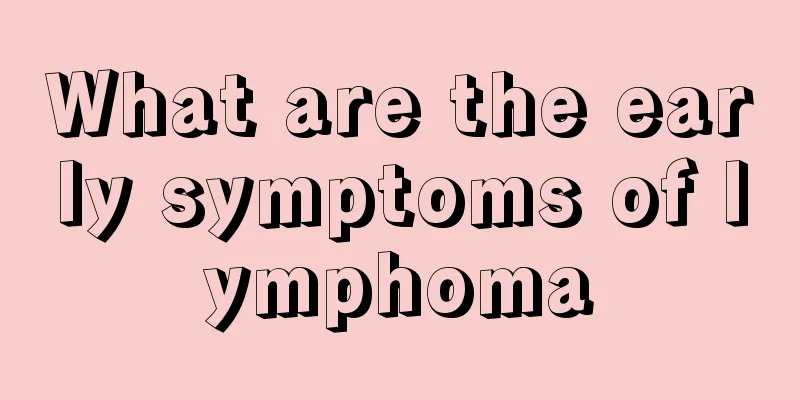Red rash after fever

|
Rashes can easily appear when the skin is irritated by fever, and it is difficult to make an accurate judgment based on a single rash. After a fever, there will be a rash, accompanied by symptoms such as nausea, vomiting, mild diarrhea or constipation. Some rashes may be caused by other factors. The specific symptoms need to be judged based on the physical condition. So, how to deal with the rash after a fever? Let’s take a look at the method below. Causes of fever and rash The incubation period of the rash is 7 to 17 days, with an average of about 10 days. The onset is acute, with a fever of 39-40 degrees. Convulsions may occur in the early stages of high fever. The patient may have mild runny nose, cough, swollen eyelids, and conjunctivitis. During the fever, there are symptoms such as poor appetite, nausea, vomiting, mild diarrhea or constipation. The throat is mildly congested, and the lymph nodes in the occipital, neck and behind the ears are swollen. The body temperature persists for 3-5 days and then drops suddenly. When the fever subsides, light red macules or maculopapules of varying sizes appear, which fade when pressed. It starts on the trunk and quickly spreads to the whole body, with more cases on the waist and buttocks. The rash disappears in 1-2 days without pigmentation or desquamation. The enlarged lymph nodes subside later but are not tender. The rash mostly occurs in infants and young children, but rarely in adults. Systemic treatment for fever and rash 1. Diet management First, avoid feeding too much food to maintain normal digestion. If you suspect you are allergic to milk, you can boil it for a longer time to denature the protein, which can reduce allergens. Or you can choose a low-allergy formula. If the condition is more serious, you will need to take a special formula. If necessary, goat milk or soy milk can be used instead of milk. If egg white allergy is suspected, give egg yolk alone, or start with a small amount of egg white and gradually increase the amount. Breastfeeding mothers can stop eating eggs. 2. Antihistamines (please consult your doctor) Taking it alone or in turns has good antipruritic and anti-allergic effects, and has varying degrees of sedative effects. Non-sedating antihistamines are preferred over sedating antihistamines. 3. Corticosteroids (please consult your doctor) Whether taken orally or injected intravenously, it can quickly control symptoms and has obvious anti-inflammatory and antipruritic effects. However, it is easy to relapse after discontinuation of the drug and cannot be cured. Long-term use can cause dependence and various adverse reactions, so it should be used with caution as appropriate. For patients with generalized acute eczema who do not respond well to other treatments, oral prednisone can be taken for a short period of time and the dosage can be gradually reduced as the condition improves. 4. Antibiotics (please consult your doctor) It is only used for children with secondary local or lymph node infections, increased white blood cell count and increased body temperature. Generally, intramuscular injection of penicillin or oral administration of erythromycin or co-trimoxazole is used. |
<<: Red rash appears on body after fever
>>: How to eliminate ankle joint effusion
Recommend
How long is the cesarean section wound?
Although cesarean section can reduce damage to th...
What to do if you eat too much salt? 4 ways to remedy it
Eating too much salt is not good for human health...
Are prostate cancer symptoms serious?
The severity of prostate cancer symptoms depends ...
Why do I have so much dandruff in winter?
Everyone must have seen some white stuff on some ...
What should I do if my hands always have cracks?
If your hands are always cracked, it means that t...
Is appendicitis contagious?
Appendicitis brings great pain to the body. First...
The best medicine for treating hemorrhoids
With the increase of modern work pressure, many p...
Exercise relaxation moves
After exercise, people always don't pay atten...
Can I wear strawberry quartz to sleep?
Strawberry quartz is a very precious crystal. It ...
Will cerebellar hemorrhage cause sequelae?
The brain contains plasma and brain matter, as we...
Huawei knuckle screenshot is not easy to use
Huawei mobile phone is one of the most popular mo...
What are the treatments for endometrial cancer? There are these treatments
Endometrial cancer is a very serious malignant tu...
Lophatherum antihypertensive drug_Lophatherum antihypertensive drug
There are many types of antihypertensive drugs on...
How long does it take for blisters to form after a burn
In fact, people's skin is relatively fragile....
What are the methods to remove spots and acne scars?
If you have spots or acne marks on your face, it ...









